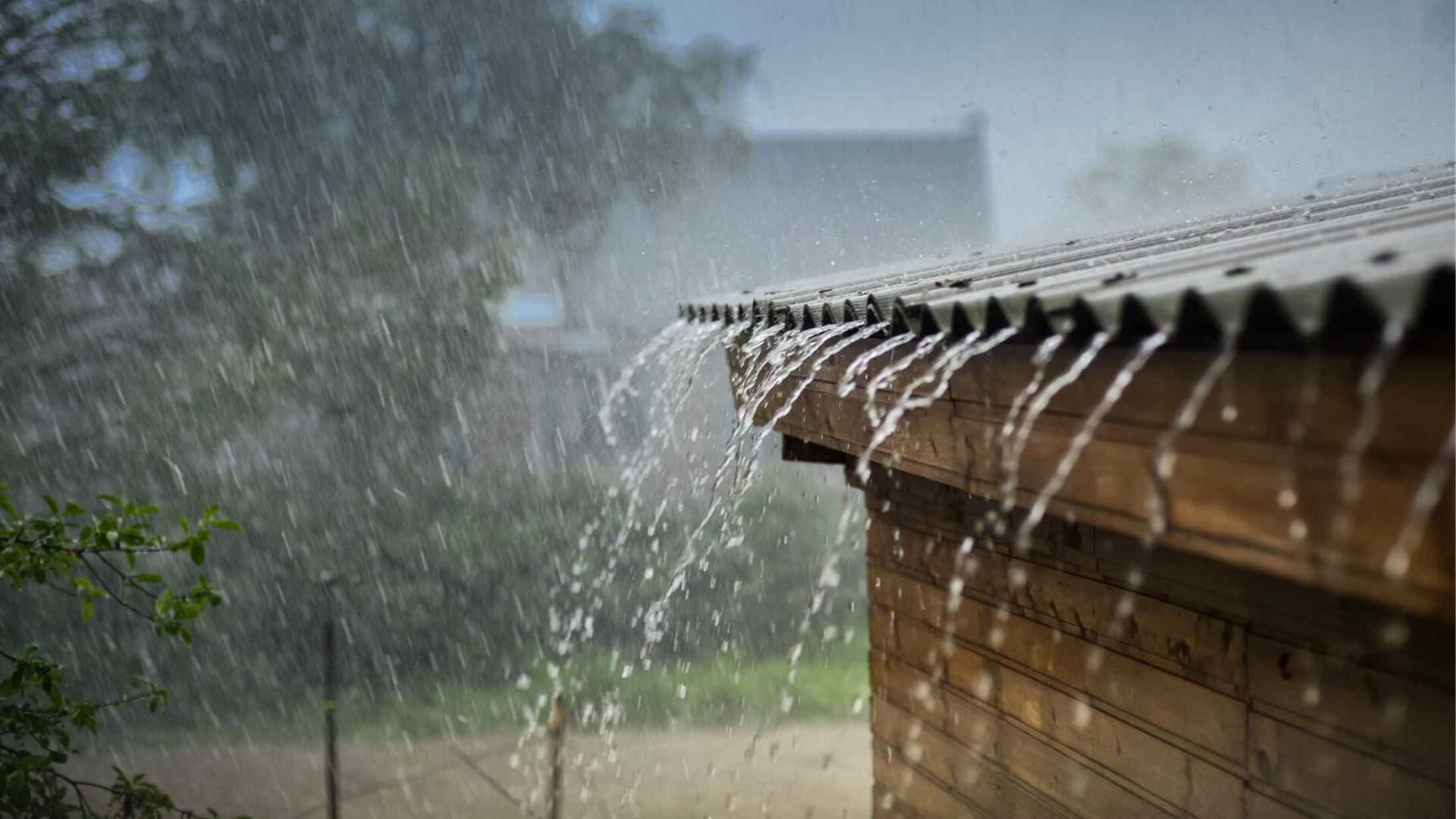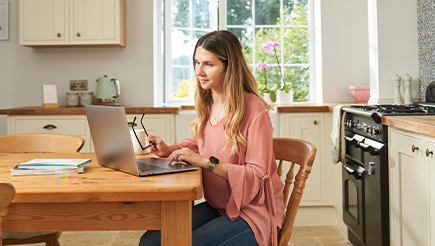Every year, the UK experiences long periods of heavy rainfall and high winds; particularly during the winter months. Whether it’s raining cats and dogs or blowing a hooley, extreme weather spells bad news from landlords.
Thankfully there are precautions you can take to protect your rental property from the extreme weather damage storms can cause. Read AXA’s guide to find out what to do before, during and after a storm.
Before a storm…
Stay on top of the weather forecast
You can check if your rental property is at risk of flooding by signing up to the Met Office’s weather alerts. Click the links here to check the risk of flooding if you’re a landlord in England, Scotland, Wales or Northern Ireland. You can also find out if you’re at risk of flooding by using the Land Registry’s free service.
The Met Office even has a dedicated X account where you can keep an eye out for weather updates. And smartphone apps like Dark Sky means you can get winter weather predictions at your fingertips.
Weather-proof your rental property
Regular inspections can be a good way of ensuring the property is in good working order throughout the year. Protect against storm or flood damage with AXA’s landlord checklist of things to look out for when you’re weather-proofing your rental.
A landlord’s weather-proofing checklist
- External walls Seal any gaps in external walls and foundations with foam or caulk to prevent cold air and water entering the property. You might even want to consider painting the walls with a waterproof coating.
- Garden Get rid of overhanging, loose or dead branches to help prevent damage in windy weather. It’s always wise to consult a professional tree surgeon before carrying out any work yourself. And, be sure to check with your local council that the affected trees aren’t protected.
- Guttering Clear your gutters to avoid a build-up of leaves and other debris. High winds can seriously damage guttering, so regular checks throughout the year are really important. You might also want to invest in heat tape to run around the underside of your guttering to prevent ice from forming.
- Internal and external pipes Insulate all external pipes and any internal pipes that are in unheated areas (e.g.in the basement or loft) with foam or rubber tubes. These tubes should then be checked regularly as they can erode over time.
Top tip: If your rental property is empty during the winter months, you might want to turn off the stop tap and any outside water taps to avoid water freezing in the pipes..
- Roof Check your roof regularly for any missing slates or tiles and make sure everything is secure. Debris on the ground and leaning chimneys are tell-tale signs that there may have been storm damage to your roof which needs attention. If you have a flat roof, it should be checked every two years by a competent roofer. If not maintained, flat roofs can be lifted off by high winds and are prone to ‘puddle’ in the event of rain.
- Sockets/plugs If your property is in an area prone to flooding, it’s a good idea to raise sockets, fuse boxes and wiring to at least 1.5m above the floor to protect against flood damage. Even if you’re a dab hand when it comes to DIY, it’s wise to leave this kind of work to the professionals.
- Outbuildings Sheds and garages can be a great place to safely store outdoor equipment during a storm. Make sure the roofs are securely fastened in place so they can withstand severe weather.
- Windows and doors Use sealant or draught-excluders on windows and doors. Not only will this keep the property cosy in colder months, but your tenants will also use less energy on heating and your property will be that little bit greener.
Expert advice: When you’re next decorating, use water-resistant materials in your kitchen and bathroom. For example, use stainless steel, plastic or solid wood rather than chipboard.
During a storm…
What your tenants should do when bad weather hits
When bad weather hits, you’ll want to stay in regular contact with your tenants and have your phone by your side should they need to report any damage. Here are some top tips and expert advice you might want to pass on to your tenants so they can keep calm in the eye of a storm.
- Know where the internal stop tap is Your tenant might need to turn off the internal stop tap (sometimes known as a stop valve or stopcock) in an emergency.
- Lock all the windows and doors You might even want to supply your tenants with plywood to protect the glass from flying debris.
- Move important things upstairs If you have a two-storey house, the tenant should move any electrical equipment and sentimental items upstairs.
- Park car in the garage Encourage your tenants to use a garage if the property has one. This will protect their car from fallen or flying objects during a storm; trees and trampolines are common culprits.
- Put sandbags down They should be placed in all the areas water can enter the property such as doorways and vents. Remind them that sandbags won’t work if the property is already flooded or the problem is groundwater flooding.
Did you know? If your area is prone to flooding, you might be able to get sandbags free from your local council.
- Turn off the gas and electricity This is particularly important if the tenant notices damp patches during heavy rainfall.
- Turn the heating on Having the heating on for at least one hour per day will keep water flowing through the pipes and prevent them from freezing. It’s also a good way to prevent dampness which is common in the colder months.
After a storm…
What happens if your tenants have to move out
If a storm causes extreme property damage - to the point your tenants need to move out - you’ll need to make arrangements with them about what happens next. Private landlords don’t usually need to provide alternative accommodation where extreme weather has caused homelessness – this is the local council’s responsibility. However, landlords might be obliged to pay for it if they knew about a fault in the property and didn’t fix it.
If you’re not providing alternative accommodation for your tenants, you need to think about how you’ll proceed in terms of your rental income. Unless stated otherwise in the tenancy agreement, tenants are usually still required to pay their rent even in the property is uninhabitable. However, if the property is very badly damaged and the repairs will take several months, you might want to consider ending the tenancy.
Who is responsible for the repairs: landlord or tenant?
For residential properties, it’s usually the landlord’s responsibility to organise and pay for repairs caused by a storm. However, it’s common for tenancy agreements to include a clause stating that the tenant must make the landlord aware of any repairs or issues with the property as soon they arise. A clause like this means that, if a tenant doesn’t make the landlord aware of an issue and the problem worsens, the tenant may be liabile for property damage that occurred as a result of the tenant’s negligence.
Example
Let’s say a storm caused roof tiles to become damaged but the tenant doesn’t tell the landlord. A period of heavy rainfall shortly after means the roof is now leaking and there’s water damage to the property. In this example, the tenant could very well be responsible for the damage depending on the tenancy agreement in place. However, if the tenant reported the faulty roof tiles and the landlord failed to act, the responsibility would fall with the landlord.
Is storm damage covered by my insurance?
Storm damage caused by poor property maintenance isn’t usually covered by your landlord insurance. That’s why it’s so important to inspect the property and stay in regular contact with your tenant.
If you’re not sure about any aspect of your landlord insurance cover, it’s always best to check your policy documents or speak to your insurance provider.
Insurance tip: Take photographs of any weather damage as soon as it’s safe to do so and to speak to your landlord insurance provider before you start any repair work.


